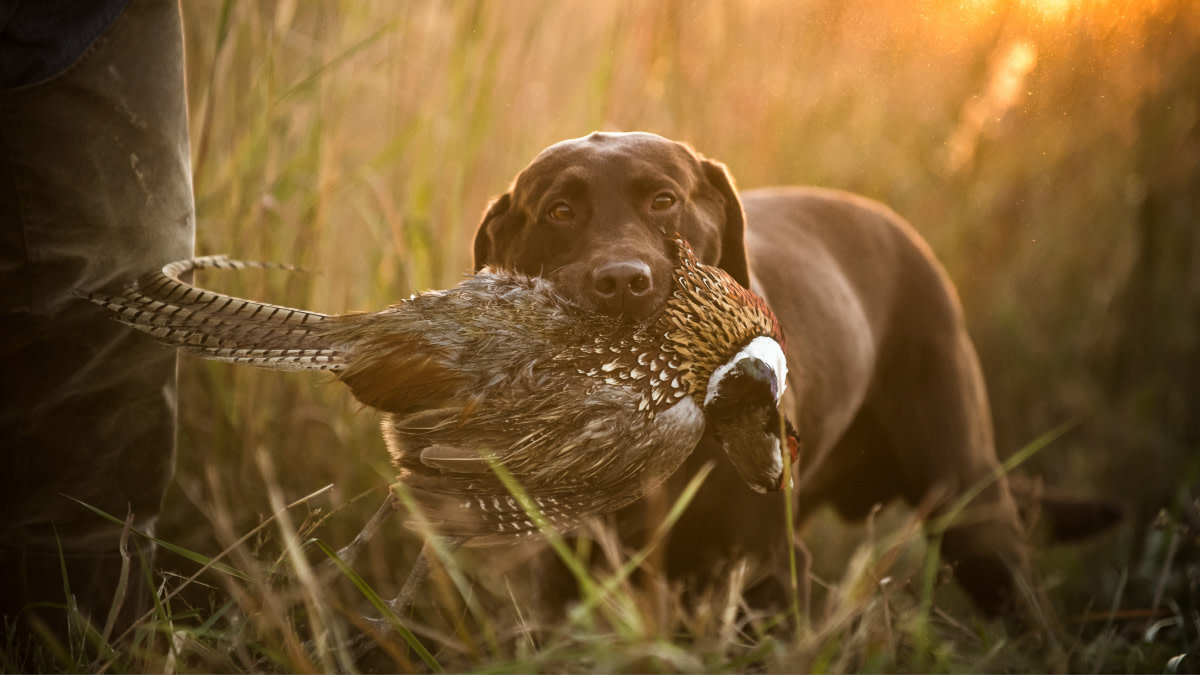
Upland hunters are an interesting bunch. We pay close attention to the whisper numbers for game bird counts, and often plan our days afield based on how many roosters are supposed to be on the landscape. During the last decade, those numbers have crept north almost across the board, but that doesn’t keep folks from longing for the “good ol’ days” of upland hunting.
Admittedly, we aren’t back to the boom years of the ‘90s, but is it as doomy and gloomy as we often tell ourselves? In my experience, no, and it’s not even close. Pheasant populations in a lot of states are coming back, and they are doing so on public dirt.
One upland junkie’s experience doesn’t make a trend, of course, so I reached out to Bob St. Pierre, director of marketing and public relations for Pheasants Forever.
“Our high-water mark in recent years was during the 2007 and 2008 seasons when states like Kansas and South Dakota had 40- to 60-year highs in pheasant harvests. We had 36 million acres of CRP then. Today, we are sitting at 24 million,” St. Pierre said.
“I would say we are rebounding right now from those lows, but we need more cover. With the passage of the Farm Bill, we are slated to get another 3 million acres, but we won’t have a CRP general signup period until next year. That puts all of that critical habitat out at least another two years.”
This reality is a shame. When you consider the low commodity prices in recent years, as St. Pierre also pointed out, CRP enrollment would be welcomed by hunters and farmers alike. But, until those millions of extra acres arrive to boost populations, states will have to rely on good weather for good broods.
“We went into last winter looking good across the core pheasant range, but we came out of it less confident,” St. Pierre said. “March and April snowstorms likely delayed nesting or washed out early nesters.”
Provided none of the eggs hatched, ruined nests will get refilled by willing hens, but the overall clutch size drops with each re-nesting effort. This means that while hens do a good job of getting eggs on the ground, brood sizes tend to run smaller and smaller the further they get from prime nesting season.
This likely happened to a fair amount of the pheasants in stronghold states. The upside is that adequate rainfall has resulted in no shortage of tall, chick-hiding cover loaded with insects. This means that while the broods are probably on average smaller than we’d like to see, the survival rate should be high.
And the hunting opportunities are out there. John Laux, upland habitat and access program manager for the Nebraska Game & Parks Commission, says that it’s not just a federal-level responsibility to ensure suitable rooster habitat, as some states like to frame it. “In 2016, we kicked off the Berggren Plan, which is a five-year initiative designed to increase pheasant abundance and provide access to them,” Laux said.
This has been achieved through financial incentives aimed at convincing private landowners to enroll their ground in Open Fields & Waters Program and other methods—a big win for hunters.
“We do a hunter success survey at the end of each season and last year we harvested 130,000 birds,” Laux added. “That’s a 12% jump from the previous season and only slightly down from our five-year average. Our pheasant population appears to be slowly and steadily increasing each year. Naturally, you’ve got to take into account regional weather conditions and habitat abundance, but overall things are looking pretty good for our birds and bird hunters.”
Aside from harvest trends, Laux has other reasons to be optimistic. Nebraska is one of the states that relies on mail-carrier surveys to keep tabs on pheasant populations. Unlike many states where a single, late-summer survey is conducted, Nebraska’s postal-employees-turned-wildlife-observers conduct three surveys.
“We do counts in April, July, and October,” Laux said. “The first is to get the pulse of the winter survivors and check adult carryover trends. The second is to gauge brood production and see what kind of nesting season we had. The last is an effort to understand dispersal rates and overall survival going into our season.”
What this means in Nebraska, as well as the Dakotas, Kansas, and other parts of the Midwest, is that there are roosters to be had, whether you’re unleashing your dog on private land or public. If the latter is the case, consider this line from a fascinating study published by the Nordic Board for Wildlife Research, appropriately titled “Prey availability and accessibility drive hunter movement:”
“Hunter effort within fields for the duration of hunts was positively related to predicted habitat use and negatively associated with correlates of physical exertion and increasing distance from field edges,” the study authors wrote.
In layman’s terms, the hunters in the study generally walked the best looking, easiest-to-reach cover, and most weren’t willing to walk too far to get to birds.
This study, which used GPS coordinates to track not only hunters, but pheasant locations on parcels of public ground, provides valuable insight into why some hunters believe there are fewer ringnecks than there really are. In short, they often aren’t willing to put in the effort to reach the roosters.
Take that for what it’s worth, and remember that while we don’t have all-time high pheasant numbers, populations across the core range are strong and forecasted to get better. All told, it’s a good time to be a pheasant, and a damn good time to be a pheasant hunter.
Feature image via John Hafner.






Conversation